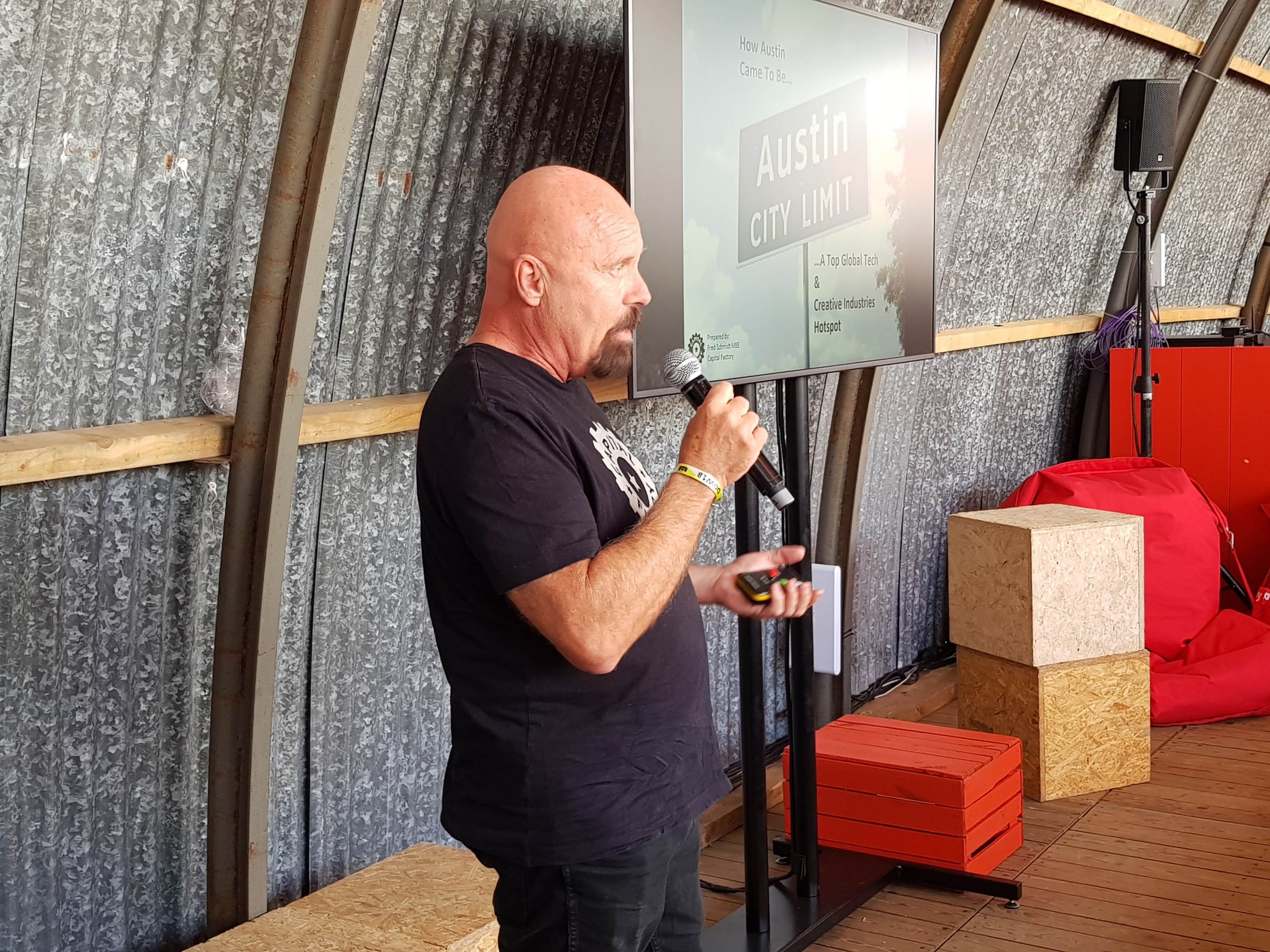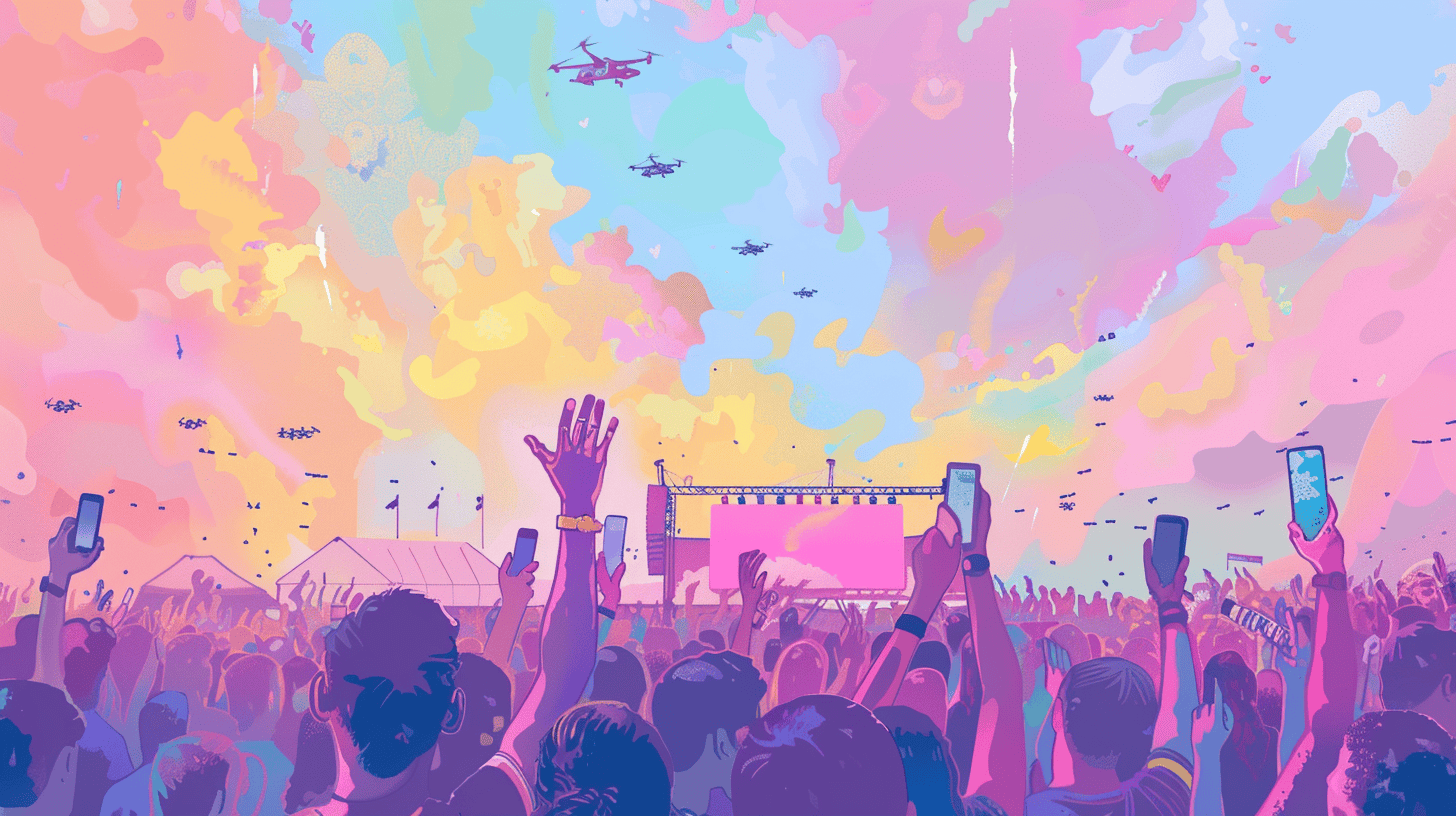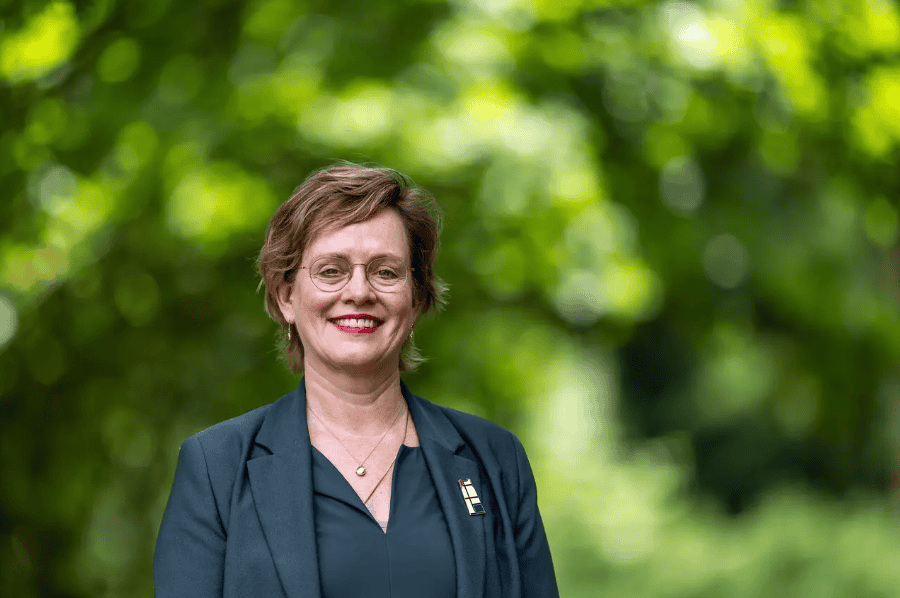
Ask any Eindhoven citizen what he or she knows about Austin, and maybe one or two might know that it’s a city in Texas, but that will be about it. Yes, there will be some nerds or music fans who know South by Southwest (SXSW), the festival that brought fame to Austin from all over the world. Still, Brainport Eindhoven is considering to strengthen the ties with this American city. Why? Let’s find out.
So first, let’s have a look at Austin itself. We’ll see similarities but also some major differences. What makes Austin different from an average American city? The first thing that will come to mind if you’re an American, is that the city is more liberal and progressive than average, especially compared to the rest of Texas. But from a European – or Dutch – point of view, being liberal might be subject to, yes, subjectivity. Maybe one of the reasons is Austin’s youthfulness: the average age is 32, mainly due to the attraction of universities and colleges.
[learn_more caption=”How big are Eindhoven and Austin?”]
Population Austin city: 967,629 (11th biggest city in the US)
Density: 1,228 per km2
Population Austin region: 2 million
Population Eindhoven city 227,751 (5th biggest city in the Netherlands)
Density: 2,596 per km2
Population Brainport Eindhoven region: 760,000[/learn_more]
And because of this, it is a well-educated city as well – 41% of the population hold a 4-year university degree or higher. There are no less than 26 public and private colleges and universities in the area with a combined enrollment of 180,000 students. As a comparison: the Eindhoven University of Technology has an enrollment of 11,000, wheres around 20,000 students go to a university of applied science. 14,000 more visit ‘mbo’, vocational schooling. In Brainport Eindhoven, 35% of the population has a higher education.
Eindhoven’s focus on Technology, Design and Knowledge (TDK), is very similar to that of Austin. In fact, as Eindhoven365’s Peter Kentie never forgets to mention: there are only a few cities in the world with the “left and right side of the brain well in balance”, and Austin and Eindhoven happen to be two of them. Austin operates with equal strength in the creative and cultural industries (music, film, writing, art) and the tech industries (grounded in microelectronics and semiconductors in the 1950s to 1970s, then exploded with software and SaaS/cloud applications in the 1990s and ever since). The city is part of the global Creative Cities Network, the International Association of Science Parks, and many more. And it is a city with dedicated Smart City aspirations. Yes, just like Eindhoven.

Although both tech cities, Austin is more concentrating on software, where Eindhoven has the hardware focus, even though the majority of new startups is more software oriented nowadays. In a world where those two fields collude more and more – not only through embedded software – this might even be an extra advantage of a collaboration. “With the rapid evolution of Internet of Things, medical devices, virtual reality, and so on, we need to increase capabilities in devising and manufacturing the hardware components that are needed to go with our software solutions”, says Fred Schmidt, director of International Affairs at Capital Factory – a community of entrepreneurs in the city of Austin. “Or partner with others who already have those skills and experience.” Like Eindhoven.
Awards
Eindhovenaren are getting used to being top of the list for tons of things. After being named “most intelligent region of the world” in 2011, new prizes and awards kept falling onto the city as if there was no competition at all. The lasting international press coverage was nothing more than a logical consequence. Thanks to all the awards, the world has learned to appreciate Eindhoven. The same goes for Austin (apparently the two have not been competing for the same goals). For the past 10 years, Austin has been rated the No.1 best city in America for everything from entrepreneurship to quality of life – most recently by Forbes and U.S. News & World Report. Just like Eindhoven, in order to keep count, the city even made a list of awards on its “Austin in the News”-page. “It is the new Silicon Valley that has no interest in being ‘that Valley’”, says Fred Schmidt. Apple has over 7,000 employees in Austin, Facebook, Amazon, Indeed, and all the other California firms have many thousands more. Oracle just built an expansive waterfront campus that will eventually have 10,000 employees. Google has 3 campuses and divisions in town.
Another similarity: the labour market mismatch. Austin has over 50,000 job openings right now and not enough skilled workers to fill them. “However, once prospective employees get past their “notions” about what Texas is, they eagerly move here”, Schmidt adds. “And they stay.” Schmidt can tell why. “In addition to no Texas state income tax on either individuals or corporations, we offer great weather year-around, excellent quality of life, and far lower cost of living than either the East Coast or West Coast of the United States, not to mention major global cities. Moreover, this is a liberal and progressive city which prides itself on being open, welcoming and inclusive. In fact, it is the combination of many factors that have all worked harmoniously together over 50 years to create the perfect storm of convergence.”
Sounds good, but what can this bring Eindhoven?

Quite a lot, Saskia Pardaans says. She is chief representative at the Netherlands Business Support Office (NBSO) in Houston. The Texas office is one of the ways the Dutch ministry of Economic Affairs tries to support international business. “And what’s more, we can help achieve things. This is extra important because most companies only consider East or West Coast.” That’s also why Pardaans was quite happy with the visit that the Eindhoven mayor John Jorritsma brought to Austin earlier this year. “He has shown his interest, he has felt the energy of Austin, and I know Austin really appreciated it.”
Pardaans has a advice as well: “Brainport has a long list of propositions with which they want to look for matches. To be honest, the list is too long. Better to choose just a couple instead of ten. Think of tech & design, startups and maybe smart city developments. But most important: mobility. Austin has a huge mobility problem and Eindhoven has all the knowledge and experience to help.”
Traffic is a mess
Fred Schmidt couldn’t agree more. “Netherlands and Denmark are longtime leaders in bicycle and other alternative means of urban mobility. Austin is just getting started. We are choked with traffic issues due to our rapid growth, inadequate roadway network, and near absence of good public transportation. It is probably too late and too costly for us to build rail. We must leapfrog ahead to embrace all new forms of mobility. The private sector is rapidly dumping bike sharing, scooters and other tools into our public realm. But the result is currently a mess. We very much need guidance and help in how to better organize all of these new possibilities into a coherent network and hasten the transition from road lanes dedicated to cars and transition them to ones made safe for use of all these other solutions.”
NXP
 That’s where, among others, NXP might come in handy. The Eindhoven based company has its American headquarters in Austin – and with a reason. Maurice Geraets, Vice President Innovation and Managing Director at NXP Semiconductors Netherlands, says he has an excellent relationship with both the Eindhoven and Austin city governments. “So it is extra nice that there have been various economic missions from both sides. I have the impression that both cities can learn from each other and given the good (personal) relationships that have already been established, a good basis for this has already been laid.”
That’s where, among others, NXP might come in handy. The Eindhoven based company has its American headquarters in Austin – and with a reason. Maurice Geraets, Vice President Innovation and Managing Director at NXP Semiconductors Netherlands, says he has an excellent relationship with both the Eindhoven and Austin city governments. “So it is extra nice that there have been various economic missions from both sides. I have the impression that both cities can learn from each other and given the good (personal) relationships that have already been established, a good basis for this has already been laid.”
The reason that NXP is working with Smart Cities both in Austin and Eindhoven is “because NXP is well represented in both locations and that both cities have good ambitions in this area”, Geraets says. “A little wider than Eindhoven, the Brainport region and also the Netherlands is clearly a leader in Smart Mobility and Automotive. And Austin is a leader in Smart Cities, illustrated by their position as a finalist in the American Smart City Challenge. For us, global leadership is important because initiatives we participate in are typically world-class – otherwise, we would rather innovate in other locations.”
On top of mobility, Fred Schmidt thinks there is one more important aspect where the Dutch could help his community: better flood control. “Although we are in the middle of Texas, Austin sits on a river that has been dammed up in several spots to form a series of “lakes”. For the most part, this has worked ok. But in times of heavy rains, which do come once or twice a year, we are prone to serious flooding. While I was visiting in the Netherlands in October, we had one such deluge that threatened to flood areas of the city normally not affected – including where I live, on the south shore of the river across from downtown. As I was discussing moving cars, motorcycles and kayaks to higher ground with my wife on the telephone, the person who I was with in Amsterdam turned to me and said: “You know, where we are sitting right here, it is 4 meters below sea level. We can probably help you guys with those issues.”
DDW x SXSW

Fred Schmidt visited Eindhoven during Dutch Design Week, as part of an 11 person delegation from Austin and SXSW. Their goal was to get a better feeling of the logic of a collaboration between the two festivals. “It was only for a short few days I could quickly see, feel and experience the similarities between our two cities: the energy, enthusiasm and clever thinking that is sourced from a rich creative community, combined with the ability to also focus, be disciplined and deliver results in the way necessary to create new products and industries. Those are the rich ingredients of the innovation economy.”
Eindhoven and Austin are by no means the only two places where those ingredients exist and flourish, Schmidt is quick to admit. “But where they do, the resulting combustion is undeniable. In fact, I sensed those ingredients to be quite present throughout all of our stops across the Netherlands in various ways and with specific strengths attributable to the different cities and regions.”
How to move ahead
If we ask Schmidt, the way to move ahead might be via the Sister Cities International program. “This is an interesting vehicle for formalizing intentional relationships between cities around the world. It has been going for over 50 years now. Austin has 13 Sister Cities and is working on a 14th one with Pune, India. I lead our relationship with London/Hackney. Our other ones in Europe are with Koblenz Germany and Angers France. I see that Eindhoven also has some Sister Cities around the world, but none in the USA.”
Another way would be to connect events like SXSW and DDW, but also the more tech-oriented events like Dutch Technology Week or even smaller ones like the Tech Sister Cities Event that was recently organized in Eindhoven. “Perhaps this is a mechanism by which mutual interest could be pursued? But speaking from my own experience, this is very hard work, usually done by professional and community volunteers. It requires considerable dedication and commitment from both sides to be successful.”
Lumolabs

Another thing might be the entrepreneurial activities like the ones from Lumolabs’ Andy Lurling. He started in Eindhoven, already copied his incubator to Los Angeles and Taipei and is now considering to start in Austin as well. “In fact, Austin would even be a more natural match with our mission than LA is. The city is like Eindhoven in many ways, so that helps. But more important, there are sponsors, excellent universities and the city is still growing bigger – students don’t feel the need to leave town after their graduation. Google and Facebook started activities there for a reason. And of course, the magnet of SXSW is interesting for us as well. This proves that much is going on around tech and design, exactly our playing field.”
Lurling has visited Austin three times, and at this point, he is planning to open an office early next year. “It’s far from easy to get started, but it’s possible. Local government offers subsidies, Texas tax laws also help.” Lurling thinks his incubator can earn its position among the existing investor funds and accelerators. “We are focused on series A investments, we think Austin will suit us better than LA with that goal in mind. In LA, there’s an abundance of angel investors who can offer the same as we do.”
As a matter of logic, Lurling was part of the “Counterwave”-initiative, that was organized by the New Dutch Wave. “Our contacts in Austin have been really helped by these guys. They have been visiting SXSW twice already and now they are preparing a third visit. It might even lead to sharing an office in Austin. As far as I’m concerned we will be opening one or two floors in a multi-tenant building around May.”
Another person looking closely to the, still careful, steps the two cities are considering right now, is Martijn Paulen, director of the Dutch Design Foundation, the organiser of DDW. Paulen already visited SXSW four years ago, and has kept warm feelings since then. “To be honest, for me it was the first time I learned about FOMO, the ‘Fear Of Missing Out’. Especially with all the innovation talks, there is so much to be seen, you constantly feel like you’re missing something.”
SXSW is FOMO

What Paulen likes about SXSW is the combination of target groups: “Of course, there are music and movie fans, as well as the tech-lovers. But you also see lots of entrepreneurs and even venture capitalists on a level that we are not used to.”

Basically, SXSW and DDW can help each other in two ways, Paulen adds. “We can learn a lot from how they have organised the whole programme for lectures. We are already proud of our own performance in that respect, but if you compare it to what SXSW is doing… the abundance of lectures, but also the quality of the speakers, that’s something to be jealous of. The other thing is that SXSW can learn something from the way we add an aspect of experience to the programme. Take the Embassy of Health, for example, but also our cultural and societal focus, I think that would be something SXSW could benefit from. What we have learned in all those years of DDW, is that any product or service can be perceived better by its audience, when it’s more than just a technical innovation. The way our designers always relate their work to their concerns about the big transformational themes – like health, energy or food – is so important.”
Since his first visit, the two festivals have been building a closer relationship. And for next year’s SXSW, Paulen hopes to see this grow even further. “We are still thinking about how to do this, but you can think about offering startups or designers a place to show themselves to the SXSW-audience.”
What the future brings in relation to a closer relationship between the two cities, will depend on the breadth of the collaboration, Paulen says. “It needs to be executed along several lines: education, business, startups, etcetera. I think that’s also the way Brainport Development is looking at this.”
Brainport, or the Netherlands?

Yes, it is, Johann Beelen confirms. Much of the explorative research is being done by Beelen, who within Brainport Development is responsible for the relations with the United States. “We take this step by step. After Jorritsma’s visit, we just kept going. Austin has been here during DDW, our next goal is a visit to SXSW, hopefully together with some designers and entrepreneurs from Eindhoven. But we’re still looking for the best way to operate. Does this need to be an Eindhoven initiative, or rather a Dutch one? Yes, the two cities fit together perfectly, but the Netherlands has much more to offer of course.”
Next stop: SXSW, Austin, Texas.









